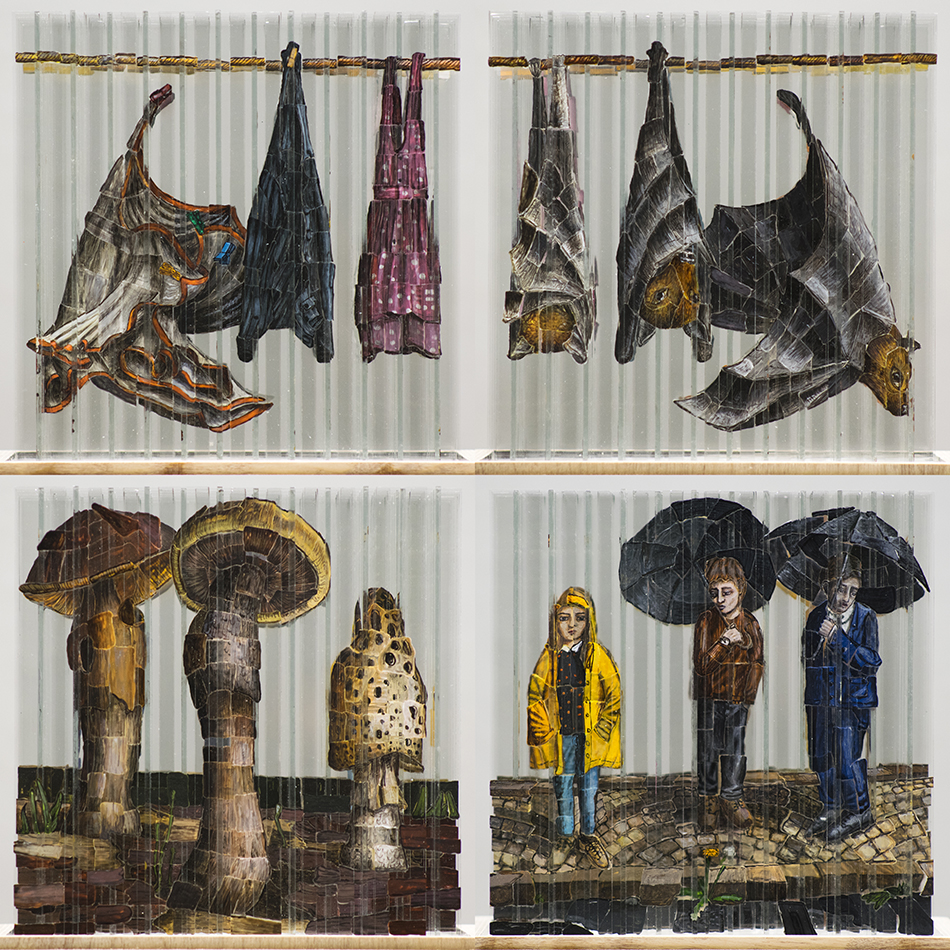
English novelist Edward George Bulwer Lytton wrote: “The pen is mightier than the sword,” a phrase that inspires artist Ravi Zupa, who believes that we achieve purpose better and more effectively through communication with art than by violence with weapons. From his mixed media sculptures and assemblages to taro-like drawings and paintings inspired by Japanese, German, and Indian styles of printmaking, Zupa has become known for is the variety in his work, where the weapon has been a recurring motif. It takes centerpiece in his current show “Strike Everywhere” at Black Book Gallery in Denver, Colorado.

The work in “Strike Everywhere” doesn’t take a side when it comes to the gun control debate, but Zupa does want to start a conversation about it. The exhibit features two main series: “Opposable Thumbs”, where animals are portrayed engaging in human activities that specifically involve weapons, hunting, exploration, and sport, and “Mightier Than”, assemblages where the main components are made out of antique typewriter parts that look like firearms used in Word War II. When his firearms made an appearance during Art Basel Miami, it attracted the attention of art collectors, gun enthusiasts, scholars, musicians and often with contradicting reactions. Particularly in the Unites States, gun-owning is a polarized issue where some see guns as necessary for their protection, while others are outraged by the senseless violence they cause.

Zupa has never owned any guns himself, but rather something else drives his art. The artist says that his work is informed by his collection of books, a passion that stems from his childhood when his mother would keep books and art supplies around the house. In our interview with the artist, Zupa told us about his background in art and also explained his use of violent iconography: “People throughout history have made such incredible, moving things and when I see these things I want to be part of it. It gives me an urge to participate. I don’t think of the images as referring to sinister times. In some ways maybe, it is heavy but art of all cultures is heavy and shows a lot of violence and hardship. I do use modern weapons in my art but to me that’s just a way of staying aware of my own time.” Ravi Zupa’s “Strike Everywhere” is on view until April 9th.














 In
In 